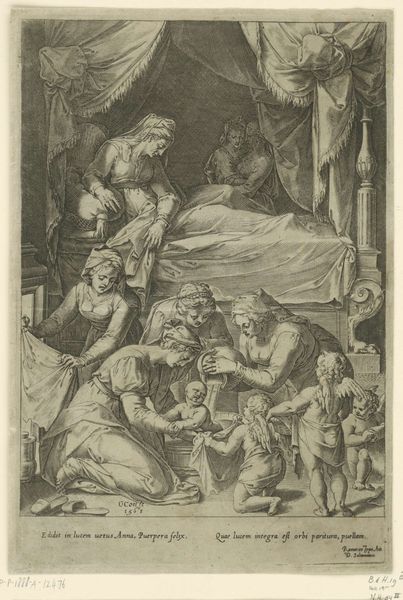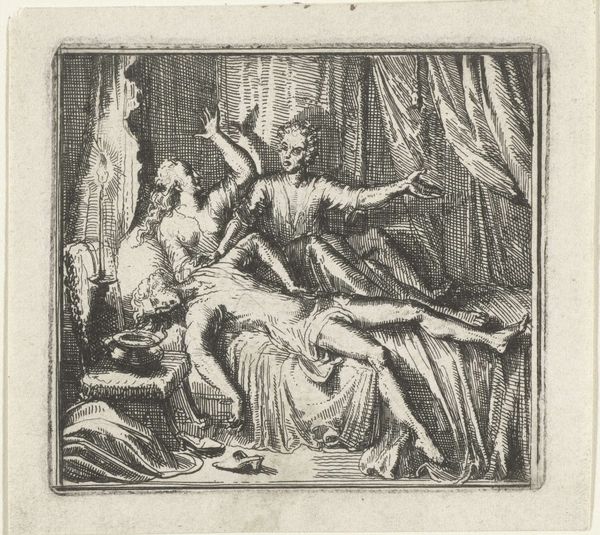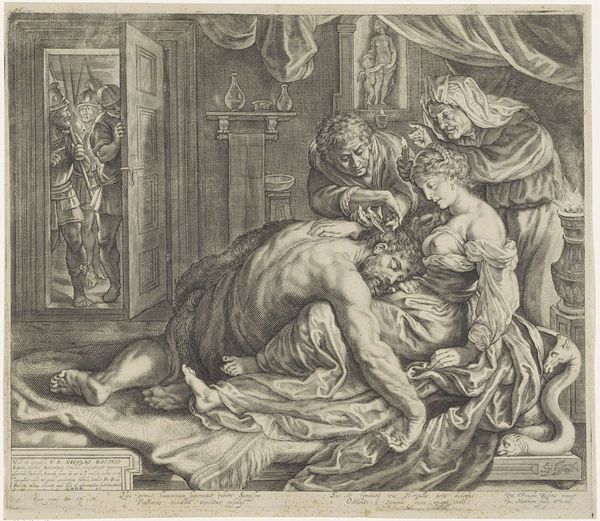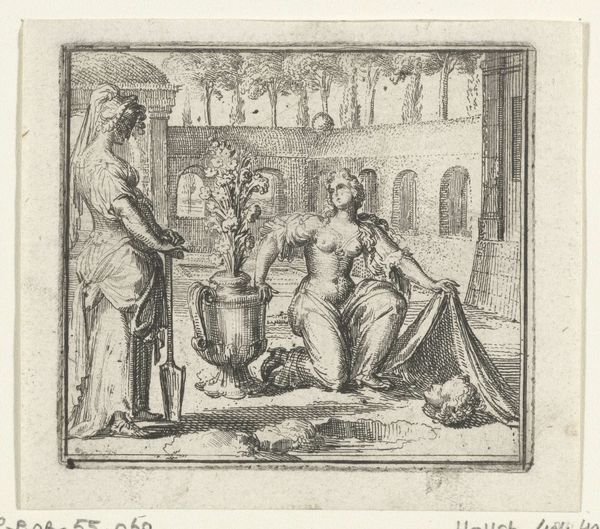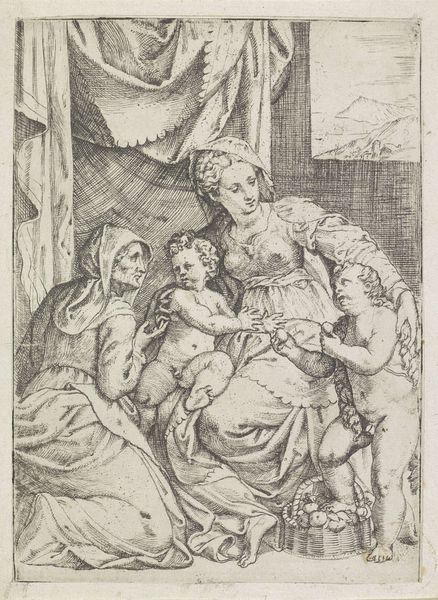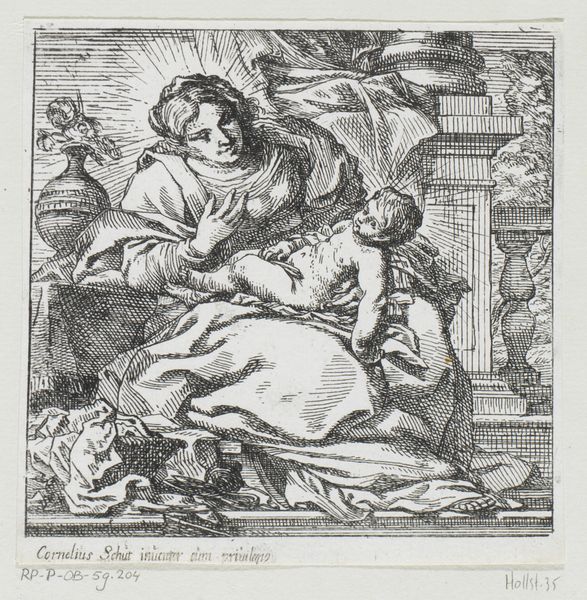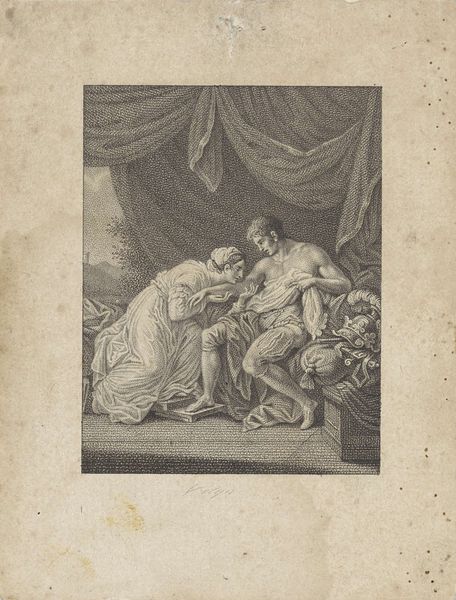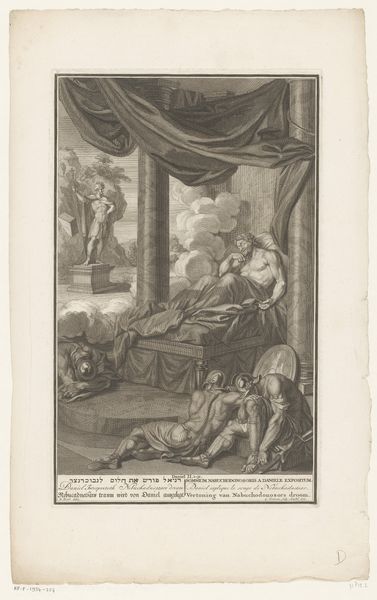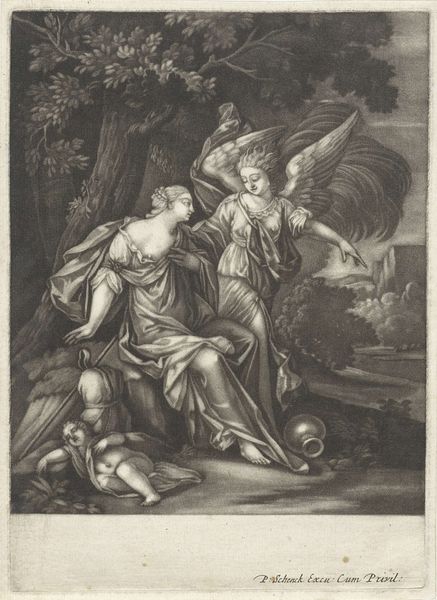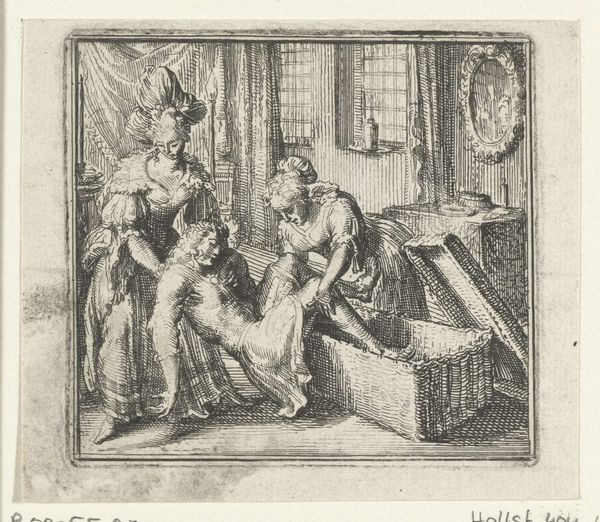
print, engraving
#
narrative-art
#
baroque
# print
#
figuration
#
history-painting
#
nude
#
engraving
Dimensions: height 73 mm, width 79 mm
Copyright: Rijks Museum: Open Domain
This illustration for Boccaccio's Decamerone was made by Romeyn de Hooghe in the late 17th or early 18th century using etching. Look closely and you will see that the printmaking process has imbued the artwork with a sharp, linear quality, distinct from the fluidity of painting or drawing. Each line is incised into the metal plate, holding ink, and then transferred to paper under immense pressure. This method requires careful planning and skilled execution, reflecting a tradition that sits between fine art and the craft of printmaking. The marks visible in the scene – from the bodies to the fabrics to the architecture – bear witness to the labor and the precision required in the production of printing. These marks, which reflect a certain degree of aesthetic sensibility, also point to the crucial role that reproductive technologies like etching have played in disseminating images and ideas. Therefore, when looking at this etching, consider the artistic decisions and the broader implications of its making.
Comments
No comments
Be the first to comment and join the conversation on the ultimate creative platform.
